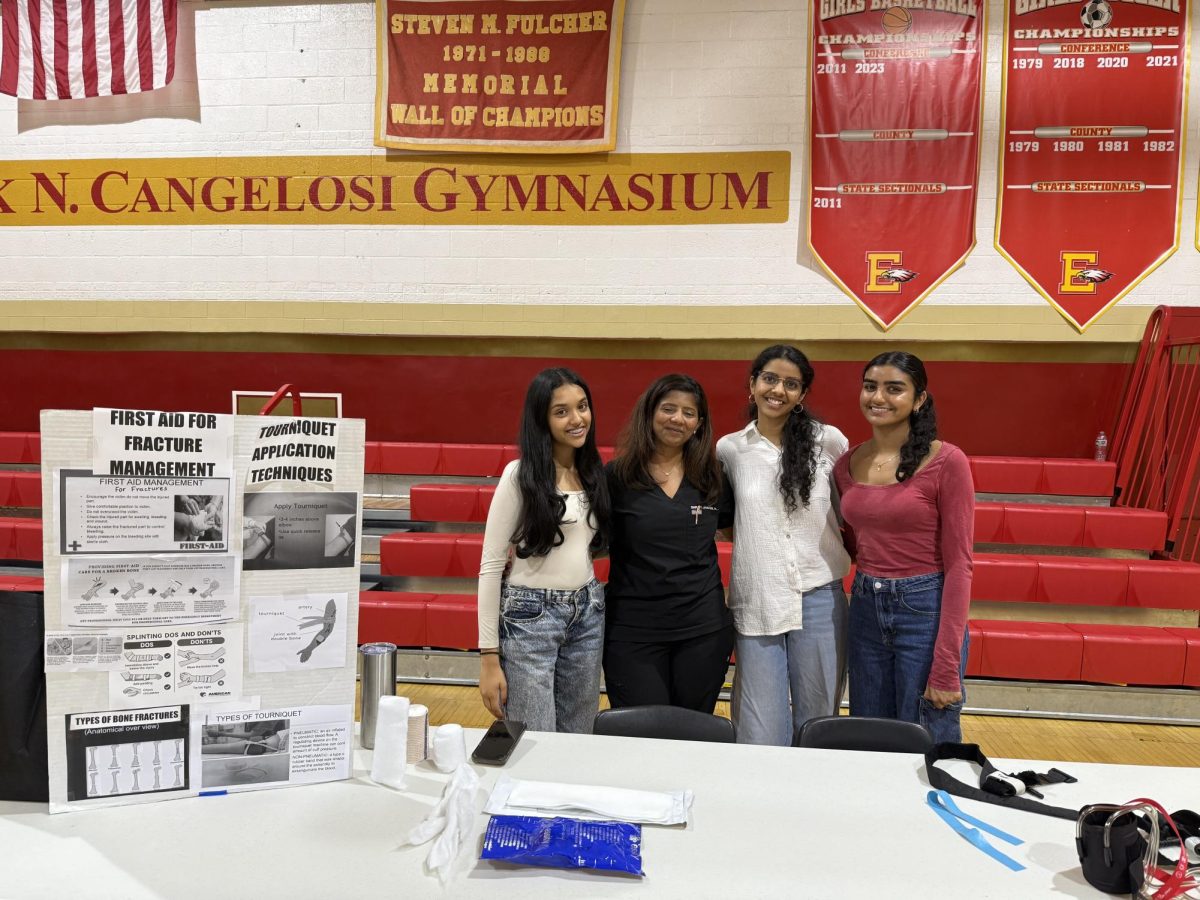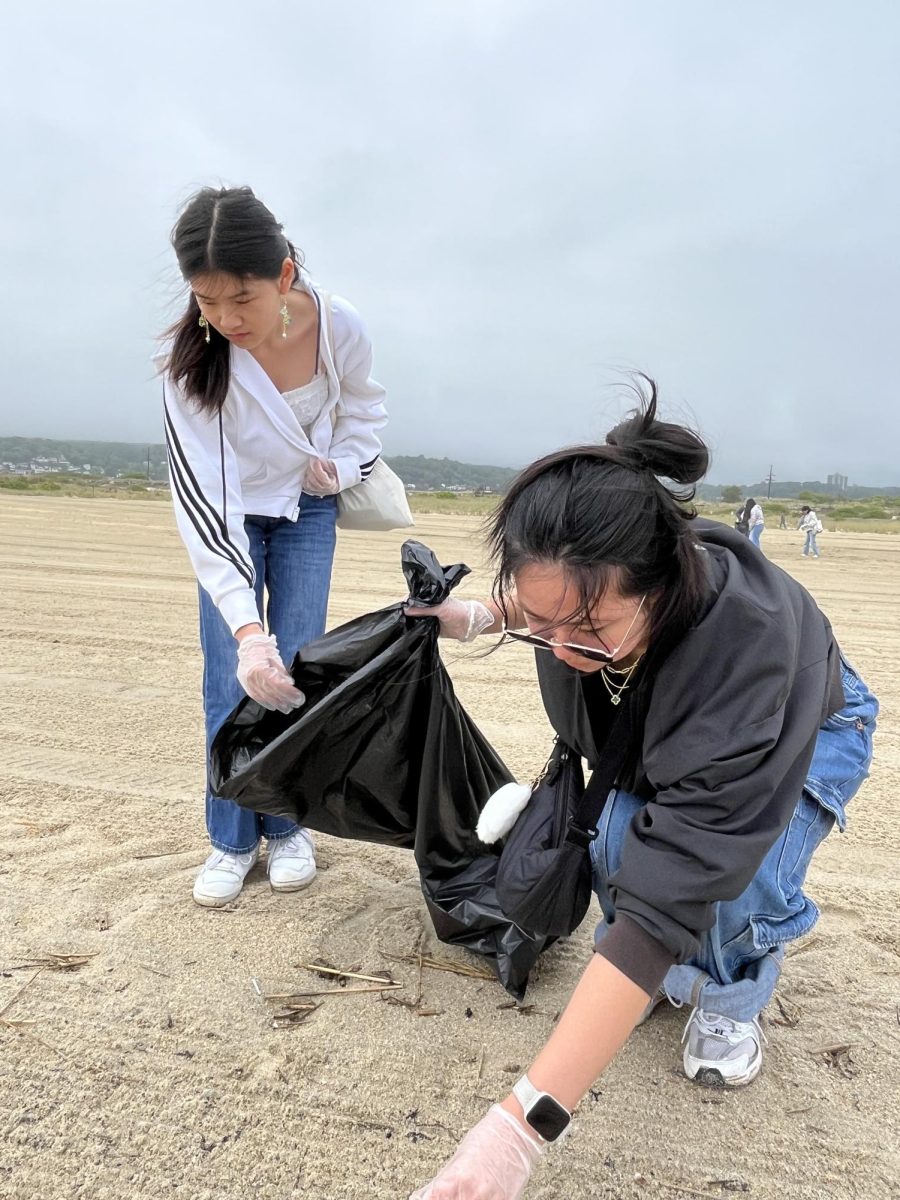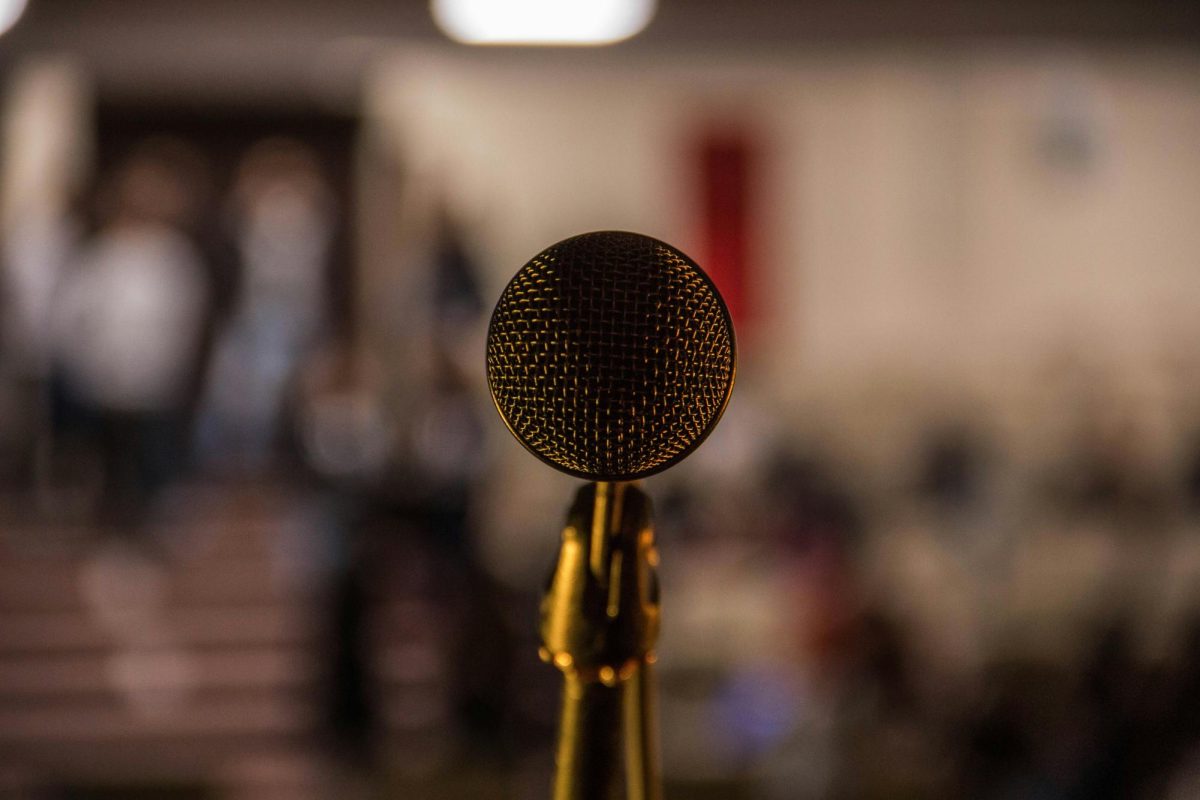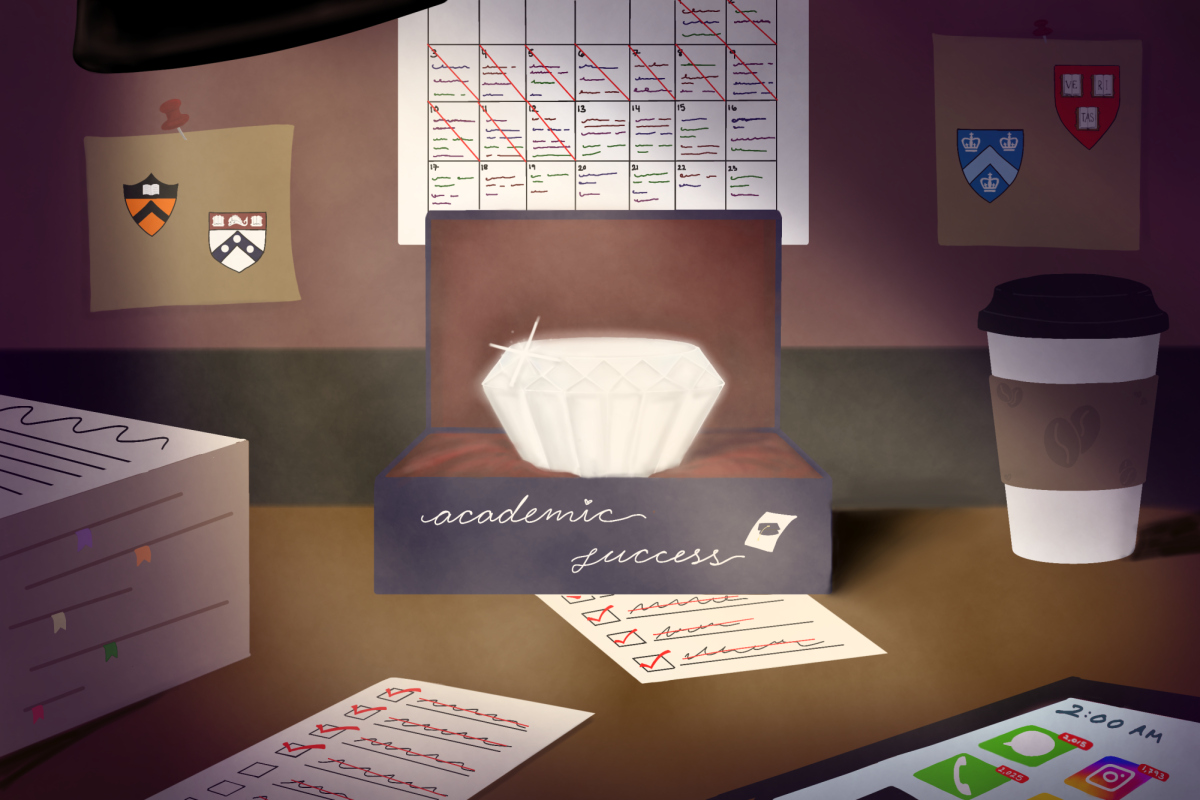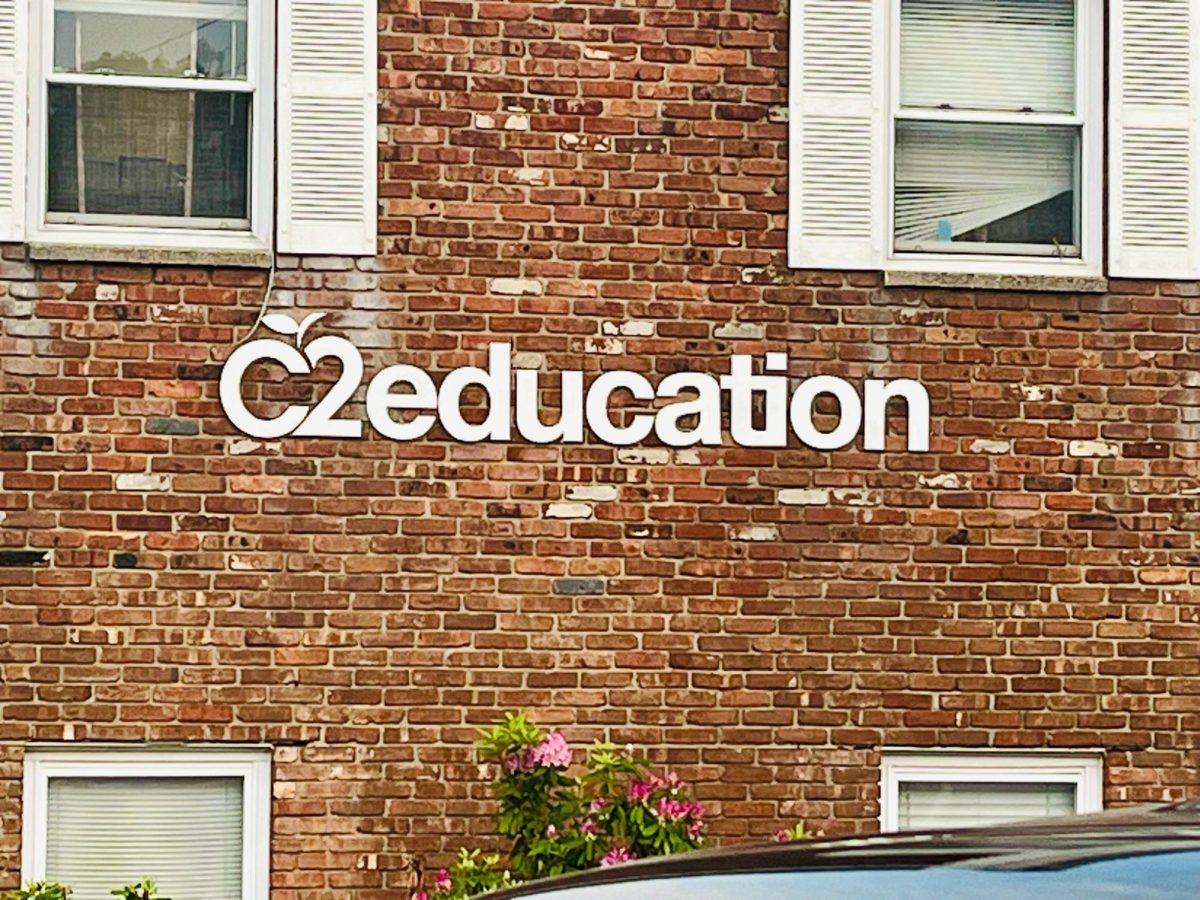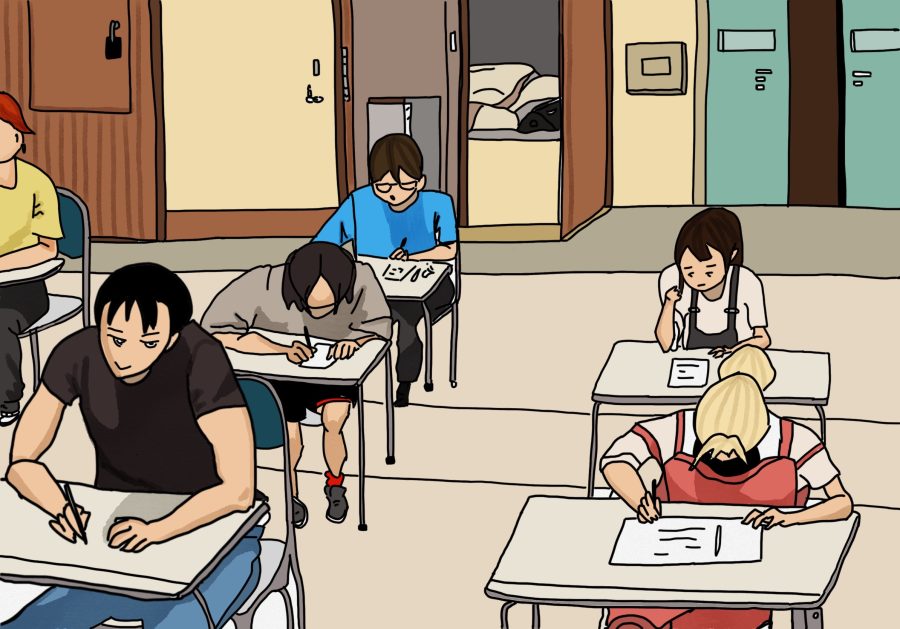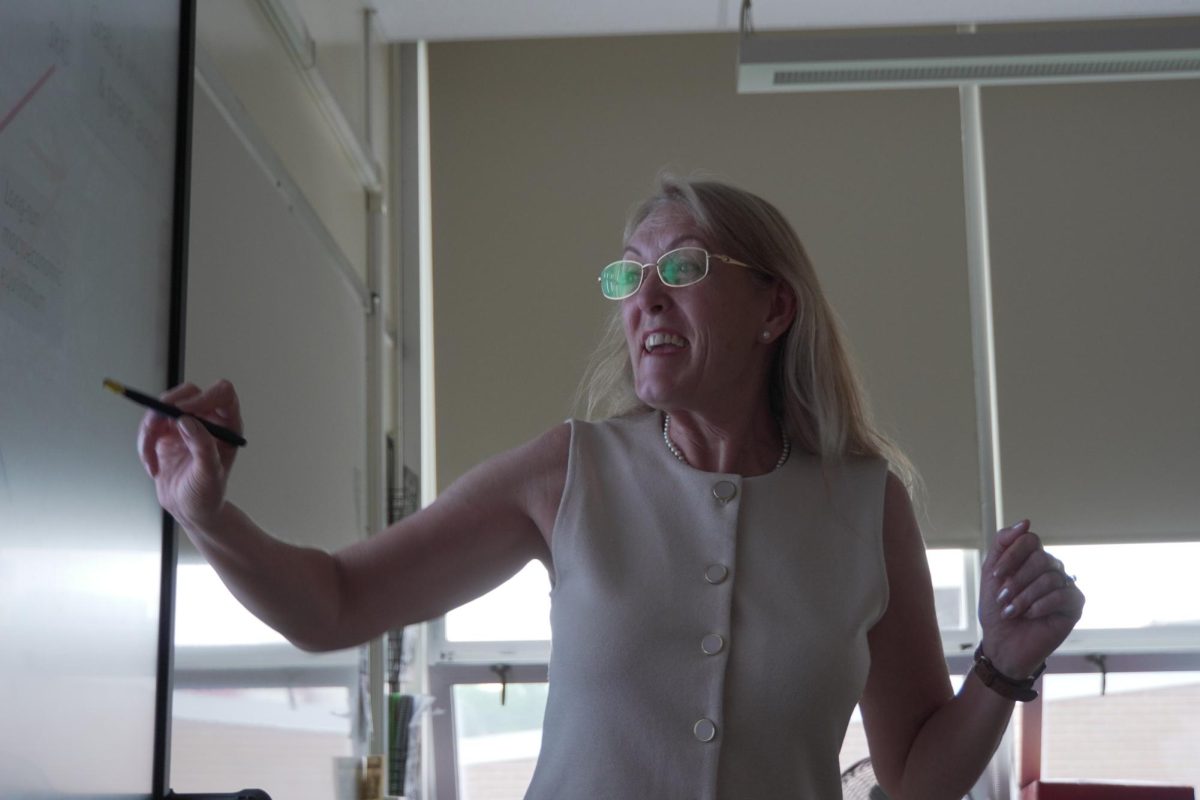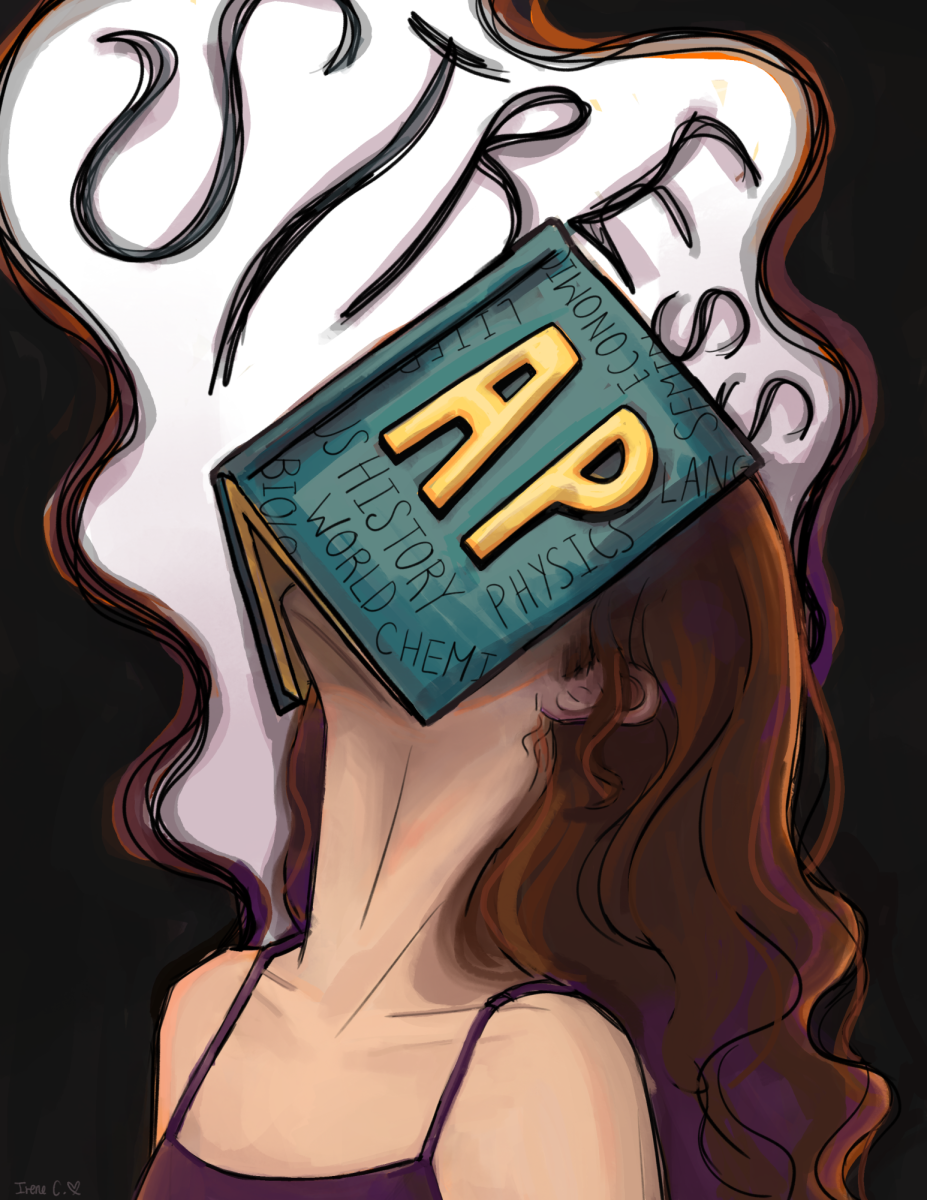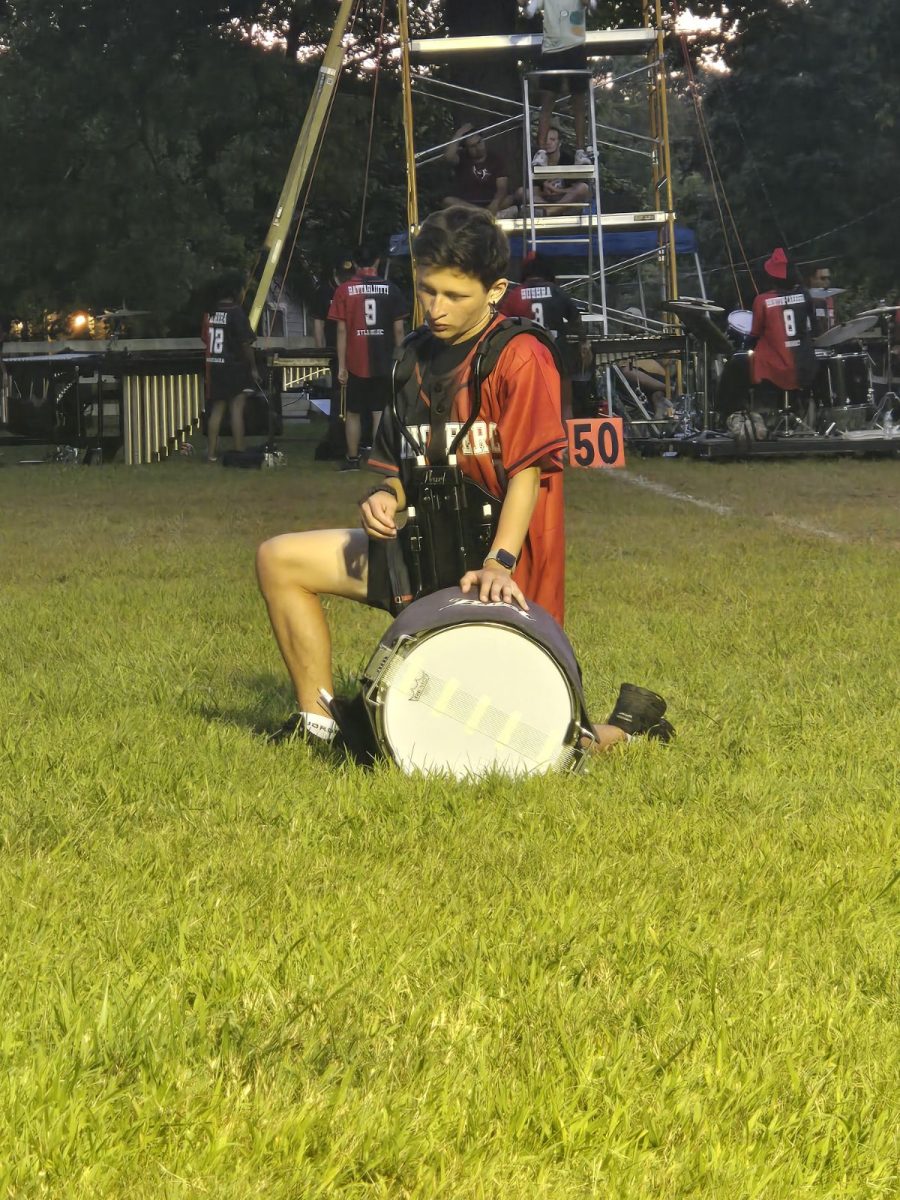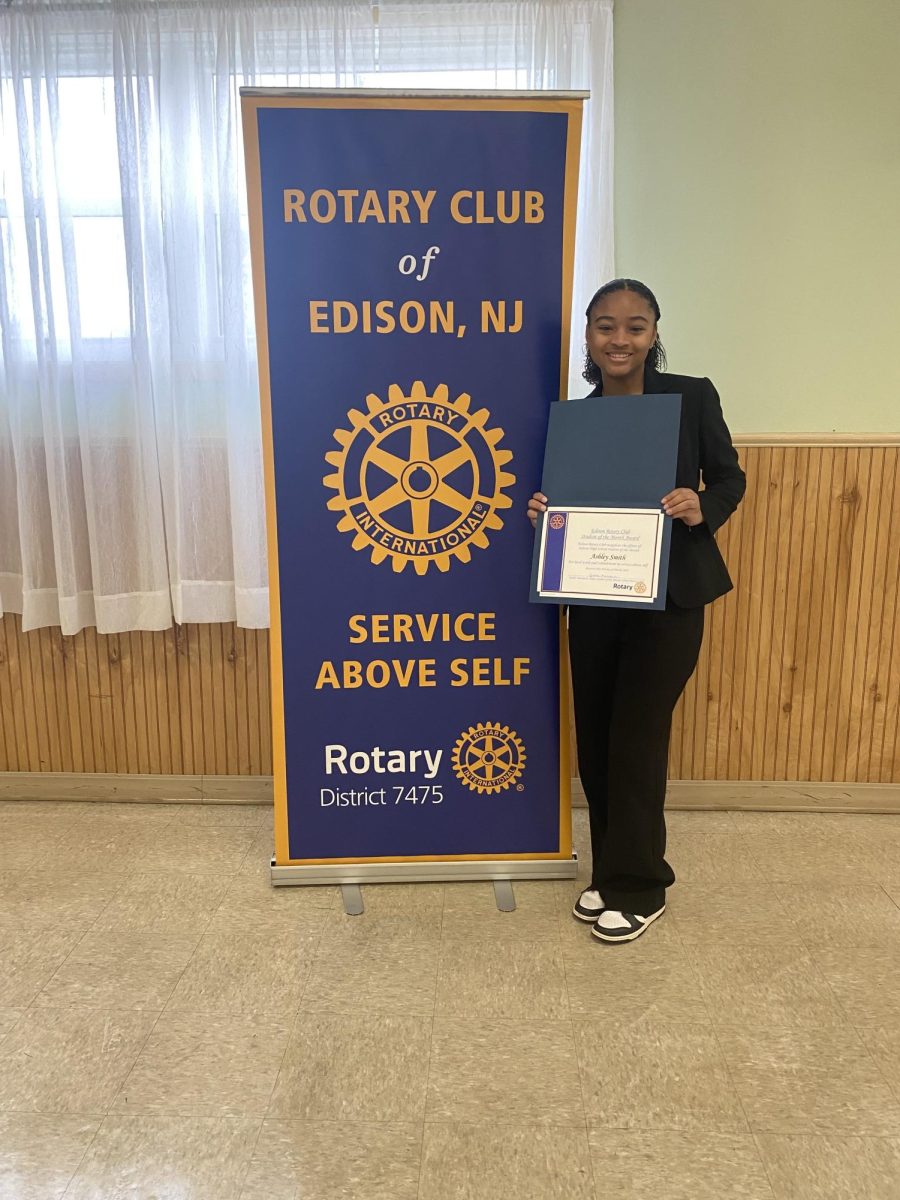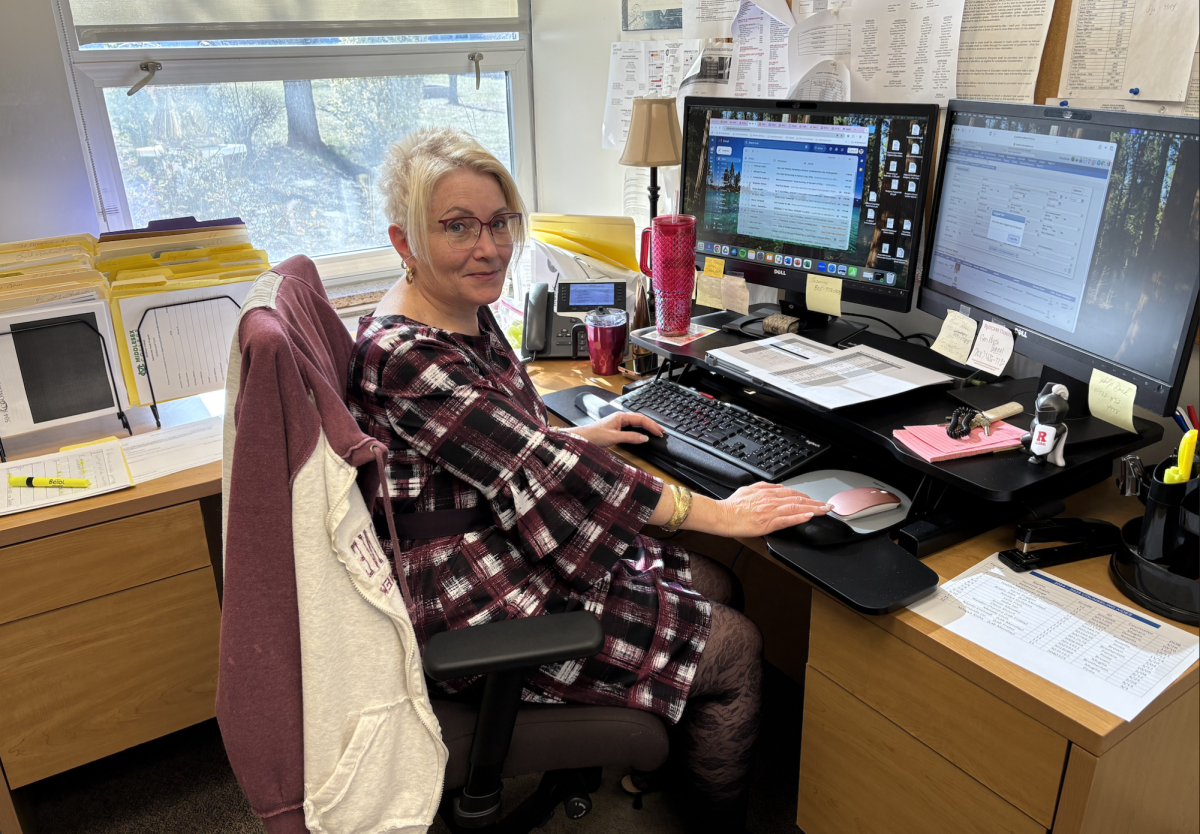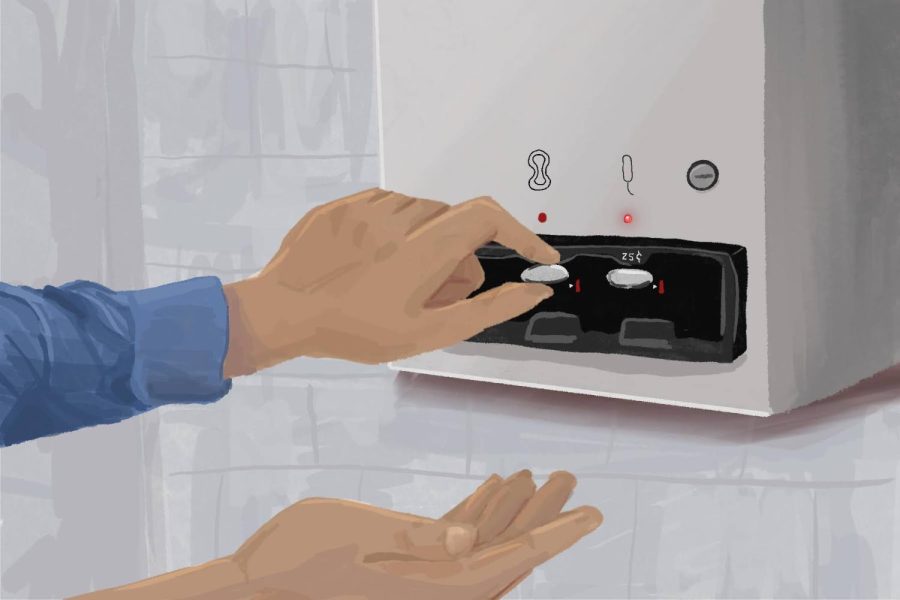The Quarter Cost to Menstruate
A person uses the menstrual product dispenser in the girls’ bathroom.
February 14, 2022
*Editors’ note: The use of the terms female, girl, and woman, refer to any person who menstruates.
Last year, in March, The Eagle’s Eye published an article advocating for the necessity of period product availability at Edison High School. This school year, students can expect to be greeted by pad and tampon vending machines in specific bathrooms.
Keyword: specific.
Edison High School ladies’ bathrooms do not all carry such sanitary napkins. So, while the female student body at EHS cannot be sure of when and where their menstruation will begin, at least we can be sure of the possibility of having to walk down many hallways with a quarter in hand and some significant discomfort, to say the least. The lack of supply goes beyond convenience.
“The vending machines were set up as an emergency, not as a first resort,” Ross said when asked about the foreseeable increase in period products. The problem with this statement is that “emergency” suggests that periods occur in an unexpected, once-in-a-blue-moon manner. An earthquake in New Jersey, a blizzard in a desert, a nuclear explosion are emergencies. Why are we treating menstruation as a “just-in-case” scenario?
Sanitary napkins are as essential as toilet paper, yet students are not expected to carry their own roll of toilet paper for their “emergency” visits. Even with this line of reasoning, female students have experienced moments when the vending machine failed to give them the products and failed to reimburse them for their quarter.
Pooja Katara ‘24 recalled her attempt to buy a tampon from the breezeway bathroom, but when she put the quarter in and pressed the metal button, no tampon appeared. She then pushed the red button, which was supposed to return the quarter, but no quarter appeared either. The dispensers are not always filled with products, which is understandable due to demand, but it is important that students do not feel desperate after spending their money on nothing.
Students are expected to have period products at their homes, and bring those to school, except that students spend more than six hours at school and are medically recommended to change their pads every 3 or 4 hours. This means that a school should be able to provide menstrual products for fifty percent of their students, as institutions are to be a healthy and safe second home for students. If students are unable to bring their own pads and products with them, it could be because of financial issues which creates shame, or even simple trust in their school to provide for their needs.
In addition, the sanitary napkins that are offered are of one size and meant for one type of flow. The pads do not have wings to prevent leakage on the side during movement and they are relatively small. The adhesion of the pads are poor, making students purchase more and more products from the dispensers. The little to no adhesion on the bottom of the pads means that the product will move with students going to gym, walking around the school, and participating in sports after school.
It is important to note that menstruation is different for every woman and for that very reason, there are many different types of sanitary napkins: pads and tampons for light, heavy, moderate flow, maxi pads, liners, junior, etc. The EHS nurses note the importance of having access to the correct sized sanitary napkins for corresponding flows.
“It is important to maintain cleanliness. The right size, the right fit matters. Without it, there are higher chances of a leak accident,” said school nurses Ms. Laura Matonis and Ms. Laura Golda.
While many females appreciate the presence of sanitary napkins in certain bathrooms, their problem arises with the cost.
“The price on them makes me uncomfortable. Period products are a necessity for female students and there shouldn’t be a price tag attached to them in school bathrooms,” said Diya Agrawal ‘22. Agrawal explained that while having period products in the bathrooms is an improvement from previous years, the 25¢ cost hinders this progress, exacerbating the issue of access and the pink tax, the hiking of prices for products geared toward women.
The quarter required is also inconvenient. “Most people only bring paper bills with them when they bring money to school, and most people don’t bring money into the bathroom, much less coins that they don’t have,” said Maulikaa Manikantan ‘22. Not only is it very unlikely students carry change when leaving the classroom to go to a bathroom, but there are many more nuances, as Matonis and Golda have pointed out. For one, the stress and anxiety of needing a hall pass to access the bathrooms in the first place augments possibilities of an accident.
Yet, the leading argument is that the nurse keeps free pads. The nurses said that they see at least twenty students a day, asking for pads, tampons, and even extra clothes. With the installation of the sanitary napkin dispensers, they have seen no decrease of students coming in. They suspect this lack of improvement is because of the price. In the nurses’ office, the sanitary napkins that are taken by students are logged, free, and used responsibly.
If the menstruation product dispensers were meant to redirect students to the bathroom for easier, reasonable access, “it wasn’t a well thought-out decision,” said both nurses.
Although the period product dispensers in the bathroom were installed with good intentions and are a good idea, the cost for each pad or tampon, the limited sizing of products, and the locked bathrooms make it difficult for the dispensers to be appreciated. It is easy to understand that some students use the bathrooms irresponsibly, but lots of other students are affected by the lack of washroom accessibility. The issues with the menstruation dispensers should be corrected, as they can be extremely beneficial and restore students’ confidence in our school, if not a good model for the world at large. The shame at Edison High School regarding menstruation and naturally occurring processes makes girls uncomfortable and sometimes even weary, if not disgusted, with their natural bodily processes.
“I hope that in the future EHS and other schools will create a more comfortable environment for female students when it comes to periods and female hygiene,” said Agrawal.

